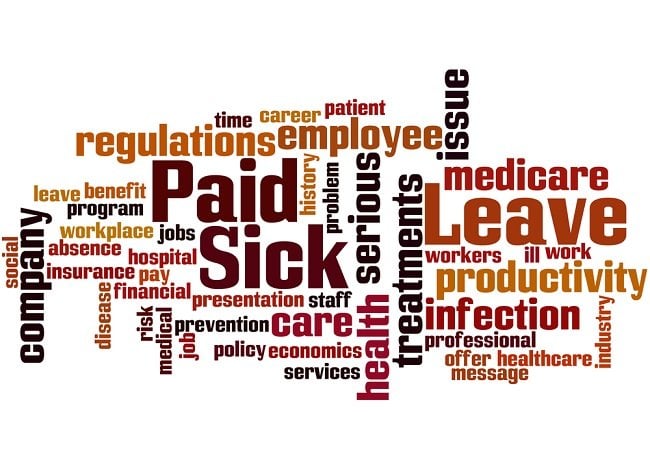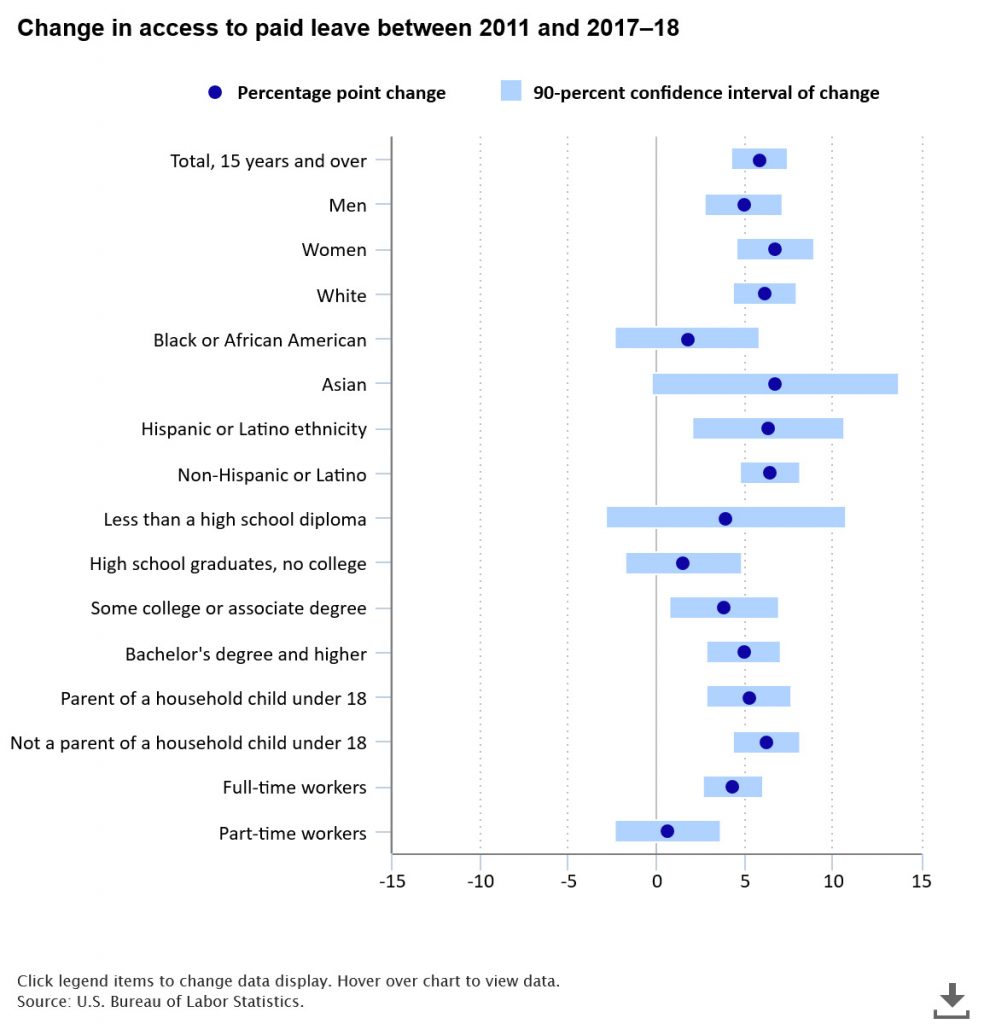 During an average week, 21 percent of wage and salary workers took leave, either paid or unpaid, from their jobs. (Image: Shutterstock)
During an average week, 21 percent of wage and salary workers took leave, either paid or unpaid, from their jobs. (Image: Shutterstock)
More workers have access to paid leave these days, but that doesn't necessarily mean that they're using it. And even though they've made gains in having access to paid leave, women still trail men in doing so.
So says the latest report from the Bureau of Labor Statistics, which finds that in 2017–2018, 66 percent of wage and salary workers had access to paid leave at their jobs, and 78 percent had access to unpaid leave—for a total of 98 percent of workers who had access to paid or unpaid leave. In 2011, only 60 percent of workers had access to paid leave.
Related: Paid leave policies: Picking up steam or is it just hot air?
During an average week, 21 percent of wage and salary workers took leave, either paid or unpaid, from their jobs. And although nine percent of wage and salary workers needed to take leave during an average month, they did not do so—with about a third of them needing the leave for their own illness or medical care and about a third needing to do so for errands or personal reasons.
Women did experience gains in access to paid leave, with 2011's 58 percent rising to 65 percent in 2017–18. But they still lagged men, with the latter's 2011 62 percent rising to 67 percent over the same time period. And women didn't take leave they needed to take in greater percentages, as well. According to the report, 10 percent of women experienced times when they needed to take leave but did not, compared with 7 percent of men.
Among women who needed to take leave but did not, the most common reason was for their own illness or medical care (42 percent); on the other hand, men most often needed leave for errands or personal reasons (40 percent).
In addition, women were more likely than men to take leave from their jobs during an average week (23 percent, compared with 19 percent, and were also more likely than men to take leave because a family member was ill or needed medical care (10 percent, compared with 6 percent).
Overall, among those who needed to take leave during an average month but didn't, 23 percent said they had too much work; 21 percent feared negative employment consequences or because their leave request was denied; and 15 percent said they couldn't afford the loss in income.
Those who made more, got more, with higher-earning professions and jobs getting paid leave in greater percentages. Eighty-six percent of workers in the top 25 percent of earners had access to paid leave; just 57 percent of workers among the lowest 25 percent of earners did.
Also, the wage and salary workers most likely to have access to paid leave were in management, business, and financial operations occupations (82 percent); installation, maintenance, and repair occupations (79 percent); and professional and related occupations (76 percent). Workers least likely to have access to paid leave were in construction and extraction occupations (36 percent) and service occupations (43 percent).
Read more:
© 2025 ALM Global, LLC, All Rights Reserved. Request academic re-use from www.copyright.com. All other uses, submit a request to [email protected]. For more information visit Asset & Logo Licensing.








